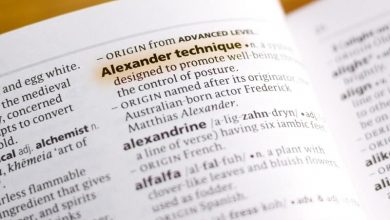Low Frequency Vibration Therapy

Low frequency vibration therapy for back pain may not be a recognizable treatment in many circles but research in the past few years suggests that it could help joint mobility, alongside stretching exercises. In addition, low-magnitude high-frequency vibration could help bones to heal according to other studies looking at animals with induced fractures and osteoporosis. Talk of energy medicine, chi, or meridians may garner a few funny looks from people but vibration therapy looks set to attract more attention in the future. Clinical trials are ongoing into its potential benefits for a variety of conditions, including joint pain, osteoporosis, and the potential to act as both a back surgery alternative and complementary therapy for back surgery patients.
Spinal Fusion Surgery and Vibration Therapy
Following research carried out by Leung, et al (2009), the use of low magnitude high-frequency vibration therapy (LMHFV, 35 Hz, 0.3 g) may be an interesting avenue for orthopaedic surgeons to pursue when considering improvements to spinal fusion procedures. The study, published in the Journal of Orthopedic Research, outlined clinically important enhancements of recovery in cases of bone fracture in animal models, with faster and more substantial callus growth and an increased rate of bone maturation during fracture healing. The rats used in this study who received low magnitude high frequency vibration treatment regained function more quickly after having their femurs fractured than those receiving sham treatment. The treated rats also had better mechanical strength in the healed bone at just four weeks after fracture.
Stem Cells, Vibration Therapy, and Bone Defects
In another study carried out by Sun, et al (2011), bone marrow stromal cells were transplanted into the area of a bone defect in subjects and followed by vibration therapy to study the effects on bone remodelling and fracture repair. Difference frequencies were used in different groups and the results appear to show that the group receiving vibration therapy at 25Hz had the most significant observed effects on osteogenic differentiation capability of the BMSCs. This had the effect of directly promoting bone formation and inhibiting bone resorption. The vibration therapy was applied once a week for five weeks and could provide a structure for treatment using stem cells and vibration therapy for spinal fusion surgery and aftercare.
More Evidence for High-Frequency Vibration Therapy in Spinal Fusion
Another study, published in the Journal of Orthopedic Research in 2011, also looked at the use of high frequency low magnitude vibration therapy after bone fracture and found positive effects for the treatment. Chow, et al (2011), looked this time at ostoporotic rats and control rats with eighty female rats having their femurs broken during the study. The rats were divided into four groups, a control group receiving no therapy, a low magnitude high frequency vibration (LMHFV) therapy group receiving twenty minutes of treatment five days a week, and then groups receiving a drug that suppresses bone-remodelling (Ibandronate) either alone or in conjunction with LMHFV therapy. The results showed that LMHFV therapy was effective at increasing bone remodelling through various mechanisms and that it could partially reverse the inhibition of such healing induced by the ibandronate.
Vibration Therapy to Postpone Back Surgery
Whilst there is some evidence that whole body vibration experienced as a work hazard is associated with an increased incidence of back pain it may be that targeted vibration therapy in short daily bursts could improve bone density and reduce the need for back surgery. Osteoporosis development is a risk factor for a variety of back conditions that could require surgery, such as spondylosis, spondylolisthesis, and spinal stenosis. Acute fracture of the bones in the spine is more likely where bone mineralization is poor making it a priority to reduce the progression, or even reverse osteoporosis where possible.
Osteoporosis and Vibration Therapy
Further evidence to support the use of high frequency low magnitude vibration therapy in cases of osteoporosis comes from research working with disabled children suffering from progressive loss of bone mineralisation (bone density) due to disuse of their limbs. The controlled trial carried out by Reyes, et al (2011), found that the vibration therapy actually improved bone density, muscle strength, and potentially independence in the children taking part in the trial, citing the effects as due to the anabolic action on bone and muscle of the vibration therapy.




